Iranian architecture is a mesmerizing blend of artistic brilliance, cultural heritage, and historical significance. Spanning millennia, this architectural legacy reflects the evolution of Persian identity, influenced by diverse eras, from ancient empires to Islamic traditions. Let’s dive into the unique aspects that make Iranian architecture a global treasure. Follow archeology.dulichvn.net to learn more about mysterious artifacts.
1. Ancient Persian Iranian Architecture
The Magnificence of the Achaemenid Empire
The Achaemenid Empire, which spanned from 550 to 330 BCE, left behind a legacy of monumental architecture that exemplifies the grandeur and sophistication of ancient Persia. At the heart of this era lies Persepolis, the ceremonial capital, which remains one of the most iconic archaeological sites in the world. This architectural marvel features colossal stone columns, some of which soar over 20 meters tall, and intricate carvings that depict scenes of Persian kings, gods, and foreign dignitaries.
The massive ceremonial halls and grand staircases of Persepolis symbolize not just the power of the Achaemenid rulers but also the unity and cultural richness of the empire. These structures were designed not only for aesthetics but to reflect the values of power, divinity, and empire-building. They stood as symbols of a civilization that sought to unite a vast expanse of peoples under one imperial rule, celebrating diversity and cultural exchange.
Zoroastrian Fire Temples: Guardians of Spiritual Life
The Zoroastrian fire temples are among the most significant spiritual structures in ancient Persia. As the center of religious life, these temples were designed with profound spiritual and geometric precision to preserve and honor the eternal flame, the symbol of the Zoroastrian faith. Typically built using a combination of mudbrick and stone, these temples blended utilitarian and sacred designs, ensuring the fire remained perpetually lit—believed to embody the divine presence.
Sacred geometries were incorporated into the temple’s design, reflecting the Zoroastrian understanding of the universe’s order, balance, and the eternal struggle between good and evil. These fire temples, often situated atop elevated platforms, were not just places of worship but also important symbols of the Persian commitment to spirituality, purity, and divine order.
Innovative Urban Planning in the Achaemenid Empire
The Achaemenid Empire was not only known for its monumental architecture but also for its innovative urban planning. Cities like Pasargadae, the first capital of the empire, were carefully designed with an advanced understanding of urban development. The layout of these cities featured symmetrical patterns and advanced irrigation systems, allowing for the efficient use of natural resources.
Pasargadae’s design included gardens, water channels, and palatial complexes, demonstrating the empire’s focus on harmony between human needs and the environment. The urban planning also incorporated elements of sustainability, with irrigation systems that supported agriculture and ensured a steady supply of water in the arid Persian landscape. These cities were not just functional but reflected the Achaemenid commitment to creating a balanced, thriving society, where urban life was intertwined with the natural world in a sophisticated and sustainable way.
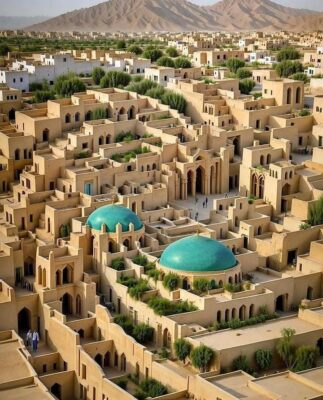
2. Islamic Influence on Iranian Architecture
Mosques with Majestic Domes
Iranian mosques are renowned for their breathtaking architectural beauty, with dazzling domes standing as symbols of divine grandeur. One of the most notable examples is the Shah Mosque in Isfahan, a masterpiece of Islamic architecture. The mosque’s turquoise dome dominates the skyline, its radiant color symbolizing the heavens.
The intricate mosaic tilework and the geometric precision in the design not only create a visually stunning effect but also embody the spiritual harmony and order of the Islamic world. The interiors of these mosques are equally magnificent, with expansive prayer halls adorned with delicate arabesques, calligraphy, and finely crafted tiles that transport worshippers into a space of transcendent beauty, where every element is a reflection of divine perfection.
Madrassas and Religious Complexes: Where Learning Meets Art
Iran’s Islamic educational institutions, such as the Madras-e-Chahar Bagh in Isfahan, are where art and functionality merge seamlessly. These madrassas serve as centers of learning and spiritual reflection, but their design elevates them into masterpieces of architecture.
The Islamic calligraphy displayed on the walls and domes imparts wisdom and spiritual teachings, while the tile patterns in vibrant colors draw the eye and calm the spirit. The serene courtyards in these complexes create peaceful sanctuaries, ideal for meditation and reflection, where students and scholars can engage with both sacred texts and the natural beauty surrounding them. The fusion of architectural elegance with educational purpose in these madrassas embodies the Islamic tradition of seeking knowledge as an integral part of spiritual growth.
Minarets and Muqarnas: Symbolism in Height and Detail
Iranian architecture is defined by its minarets, towering above mosques and religious complexes, offering both functional and symbolic significance. These slender, towering structures serve as a call to prayer, rising high into the sky to connect the earthly realm with the divine. The elaborate minarets in Iran are often adorned with intricate patterns, mosaics, and inscriptions, making them not just functional, but also works of art. Another iconic feature of Iranian religious structures is muqarnas, a decorative architectural element resembling stalactites that adorn the domes and vaults of mosques.
The intricate geometry and depth created by muqarnas lend an air of grandeur and mysticism to the interior spaces. These details draw the viewer’s gaze upwards, reflecting the transcendence of the divine while adding an additional layer of elegance to the religious experience. Together, minarets and muqarnas symbolize the grandeur and spiritual depth inherent in Iran’s religious architecture.
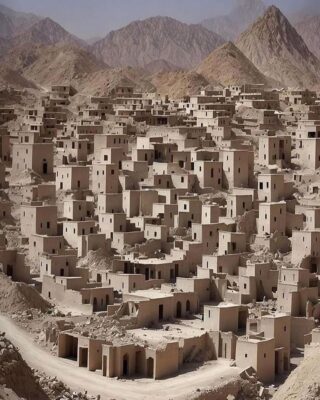
3. Modern Iranian Architecture
Fusing Tradition with Modernity
Renowned architects such as Kamran Diba and Hossein Amanat have pioneered a new era of architecture in Iran, creating structures that beautifully blend traditional Persian elements with cutting-edge modern engineering. One of the most iconic examples is the Azadi Tower in Tehran, which stands as a symbol of Iran’s architectural evolution.
The tower combines elements of Sassanian, Islamic, and modernist designs, with its archway inspired by ancient Persian architecture, while its sleek, geometric structure reflects the forward-thinking approach of contemporary engineering. These fusion designs not only honor Iran’s rich architectural history but also pave the way for a progressive architectural future that blends the old and the new in perfect harmony.
Sustainable Architecture: Embracing Ancient Wisdom
Modern Iranian architecture places a strong emphasis on sustainability, drawing inspiration from traditional environmental practices that have been honed over centuries. Ancient techniques such as the badgir (wind catchers) and the qanat water systems are being adapted into contemporary urban settings to improve energy efficiency and reduce environmental impact.
The badgir, a traditional Persian wind tower, has been reimagined in modern buildings to naturally cool interiors without the need for air conditioning, reducing the carbon footprint. Similarly, the qanat system, an ancient underground water management technique, has inspired sustainable water usage designs in contemporary urban projects. These innovations not only honor Iran’s historical ingenuity but also address the modern challenges of sustainability, showcasing a deep respect for both tradition and the environment.
Tehran: A City of Evolving Skylines
Tehran, the vibrant capital of Iran, is a living testament to the country’s architectural evolution, where historical grandeur meets modern innovation. The city’s skyline is a striking combination of cutting-edge skyscrapers, modern bridges, and well-preserved heritage sites that reflect the nation’s growth and transformation. Landmarks like the Milad Tower represent Tehran’s modernity and ambition, while the Golestan Palace and Nasir al-Mulk Mosque serve as reminders of the city’s rich cultural and architectural heritage.
As the city continues to expand, new developments seamlessly integrate with its historical fabric, creating a dynamic and multifaceted urban landscape that honors the past while embracing the future. The evolving skyline of Tehran is a visual metaphor for Iran itself—constantly growing, adapting, and honoring its deep historical roots while embracing modernity.
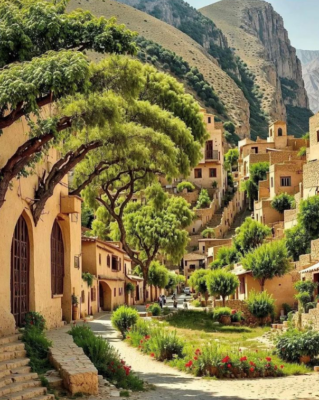
See more: Ra and Hathor: Divine Forces in Egyptian Mythology
4. Key Features of Iranian Architecture
Persian Gardens: A Harmonious Blend of Nature and Design
Persian gardens are a hallmark of Iran’s architectural and cultural heritage, designed to represent paradise on Earth. These gardens follow a strict symmetrical layout, creating a sense of order and balance, which mirrors the celestial world. At the heart of many Persian gardens are water features, such as flowing streams, fountains, and reflective pools, which symbolize the divine flow of life. The strategic use of shaded pathways provides cool retreats within the garden, offering tranquility and respite from the surrounding heat.
These gardens are not just places of beauty, but also areas of meditation and spiritual reflection, where the aesthetic perfection of the design invites visitors to connect with nature in a harmonious, peaceful environment. The deliberate integration of water, plants, and architecture in Persian gardens showcases an enduring commitment to beauty and balance, demonstrating the ancient Iranian understanding of how architecture can coexist with the natural world.
Intricate Tilework: A Kaleidoscope of Color and Symbolism
Iranian tilework is renowned for its intricate beauty, showcasing an array of vibrant colors and floral patterns that adorn some of the most celebrated structures in the country. From the majestic mosques of Isfahan to the regal palaces of Persepolis, Iranian artisans have perfected the craft of tile decoration, transforming walls, domes, and floors into works of art.
The floral motifs, often seen in arabesque patterns, carry deep symbolic meanings, representing themes of life, eternity, and spiritual growth. The meticulous hand-painted tiles, made from glazed ceramics, create a visual feast that is both captivating and mesmerizing. These elaborate designs are not merely decorative but serve to elevate the sacred and cultural spaces they adorn, creating an immersive visual experience that draws the viewer into a world of color, beauty, and meaning.
Innovative Use of Materials: Mastering Climate and Craft
Traditional Iranian architects demonstrated remarkable ingenuity in their use of materials to suit the diverse climates of the country, blending functionality with aesthetic elegance. In regions with extreme temperatures, mudbrick and adobe were extensively used in construction for their insulating properties, keeping buildings cool in the summer and warm in the winter.
These materials were also highly durable and readily available in the arid landscapes of Iran. The use of glazed ceramics in tilework and decorative elements allowed architects to introduce vibrant colors and intricate designs while providing protection against the harsh climate. This innovative use of materials not only made Iranian architecture resilient but also allowed for the creation of structures that were both durable and beautiful, showcasing the deep connection between function and artistic expression in the country’s architectural heritage.
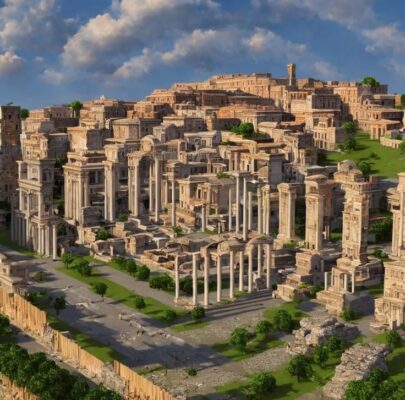
Conclusion
Iran’s architecture is a testament to the nation’s enduring creativity, resilience, and cultural depth. From the ancient wonders of Persepolis to the awe-inspiring mosques of Isfahan and the innovative urban landscapes of Tehran, Iranian architecture continues to inspire and captivate the world. It stands as a bridge between the past and the future, embodying a rich legacy that remains unparalleled.

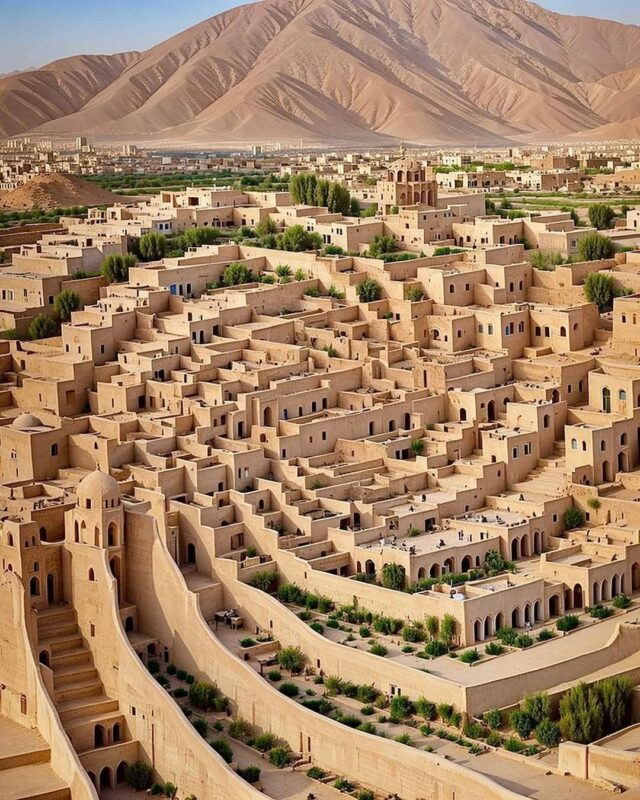
CÁC TIN KHÁC
Mary Walton: The Forgotten Inventor Who Helped Clean Up America’s Cities
Tomb of Queen Nefertari in the Valley of the Queens, Egypt
Discover the Hypostyle Hall of the Temple of Hathor at Dendera
Venus de Losange: Unveiling the Mystery of a 20,000-Year-Old Paleolithic Icon